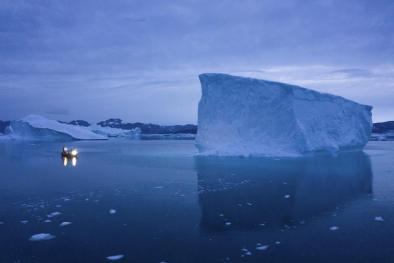Greenland lost a near-record 600 billion tons of ice last summer, raising sea levels

Climate Signals Summary: Climate change is causing rapid glacier and ice sheet melt in Greenland, which is accelerating sea level rise.
Article Excerpt: Greenland’s unusually mild summer in 2019 caused the world’s largest island to lose 600 billion tons of ice in just two months, rivaling the summer of 2012 for the most ice mass lost in a single melt season, according to NASA data released Wednesday.
“We knew this past summer had been particularly warm in Greenland, melting every corner of the ice sheet, but the numbers are enormous,” said lead author Isabella Velicogna, an Earth science professor at the University of California at Irvine and a senior scientist at NASA’s Jet Propulsion Laboratory, in a news release.
The mass loss from Greenland alone was enough to raise global sea levels by 2.2 millimeters, the study found.
...
In an interview, Velicogna said the data clearly show 2019 was a major melt year in Greenland, and what distinguishes it from previous big ice-loss years is the significant melting that occurred in glaciers in the northern and northeastern regions.
“There is a significant [melt] component also coming from the north and northeast of Greenland. And so, basically, we have the loss all around the ice sheet,” she said.
...
The study also examines ice loss in Antarctica, finding while ice loss continues in the Antarctic Peninsula and western Antarctica, including the Amundsen Sea Embayment, there was a mass gain from increased snowfall in a part of East Antarctica known as Queen Maud Land.
Related Content






